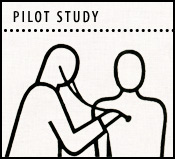Special Report: Innovation in Bangalore – Indus Westside Hospital
Driving out to the Indus West Side hospital took quite some time, working our way from the center to the outskirts on Bangalore’s smokey and crowded streets. At we drove, we noticed a roadside stand advertising a big red cross, and a hand-painted image of a fellow wearing an exaggerated frown, arm in a sling. “What’s that?” I asked our India Bureau Chief, Nikhil. “That’s a bone setter,” he explained, “many people in India do not have the money to pay or the time to wait for a doctor to set their bones, so they might visit a non-licensed bone setter who will set the bone and splint it for about a dollar.”
Amazing, I thought to myself. Once again we find in India emergent solutions to problems traditionally tackled by the government. To be sure, Bangalore bears many examples of the extremes of experience, and as I pondered this, we pulled up to a gleaming brand new glass and metal structure on the outskirts of town. This was the Indus Westside Hospital, a new operation, established with the goal of bringing western medicine at a price that could be affordable to more than just the rich. We made our way inside to where we were welcomed into the office of Dr. Shankar Bijapur, who was more than kind to us, offering us tea and biscuits, and sharing with us the story of this hospital.

He began by outlining for us the basic design of the Indian state-run hospital system. Depending on the size of one’s city, the hospital will have a certain level of equipment and expertise. Because of this, many people are forced to settle for medical care from under-trained or under-equipped providers. But things are changing. Now India sports a number of world class medical institutes. However, these are, for the most part, used only by the rich because of price tags that are orders of magnitude greater than at an Indian government-run facilities. Dr. Shankar Bijapur has some ideas about how to fill the gap between Indian state-run practices, and those for only the hyper rich, providing international standards of medicine, with a significantly diminished price tag. But how? The short answer is by clever capitalization on the mission of the hospital.
Circular, I know… so let me explain: The first part of the answer is funding.
The Indus Westside is funded in part by an international team of doctors, roughly three quarters of whom have also pledged to add their professional expertise into the project at a future time. Funding also comes from philanthropists who have adopted some interesting conditions. For instance some donors have agreed to pay for operations for the poor and needy, allowing the hospital to count on revenue even when the customer is of dubious financial means. The project takes on no debt from banks or private equity, leaving it more freedom to run the project on its own schedule, as it pleases. As the organization gets off the ground, the managers will also take a heavy cut in pay. The other part is in the facility: The land on which the hospital was built was also negotiated at a very cheap rate. The city of Bangalore wants a hospital of this caliber to be built, and Dr. Bijapur was able to use that fact to negotiate unheard of rates on his 100-year lease.
The equipment in the hospital is of the best quality, but purchased at a cut rate due to the humanitarian mission of the organization. Also, building materials and labor in India are very inexpensive. At this point in the interview, we paused to let another doctor enter the office. He was a foreigner, and working on a premature birth. “We need to wait for a decrease in pressure before de-intubation.” “Understood. But how is the family?” Dr. Bijapur later explained to us that the family, having worked with Dr. Bijapur before, had come from across India and at great expense to receive treatment at this brand new hospital. We continued the interview as he took us for a tour of the facilities.
One focus of the hospital is the care of mother and child, but it is also geared toward treating the many victims of traffic accidents that are expected to visit from the nearby highway. Consequently, it features a state-of-the-art burn unit, and is equipped to treat with trauma victims and provide emergency surgery. The hospital has 200 standard beds plus 50 intensive care beds. A normal room has three beds, with one dedicated nurse. Intensive care rooms contain more equipment per bed, and are more heavily staffed.
Patients at the Indus Westside are also treated to a more holistic approach to healing, with in-house massage, steam baths, and use of traditional remedies in congress with western allopathic approaches to healing.
Climbing back into our taxi cab, I found myself thinking about our own medical system in America. Any way you look at it, health care is going to be expensive, and the approach being taken by the Indus Westside gave me some hope that we just might be able to keep ourselves healthy without having to part with an arm and a leg.




















Comments
Comments are closed.